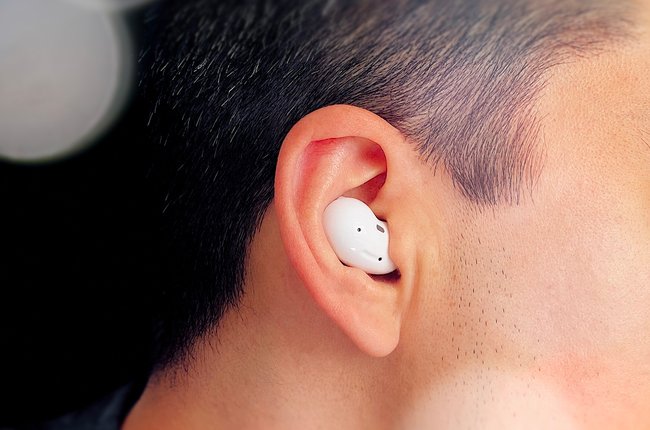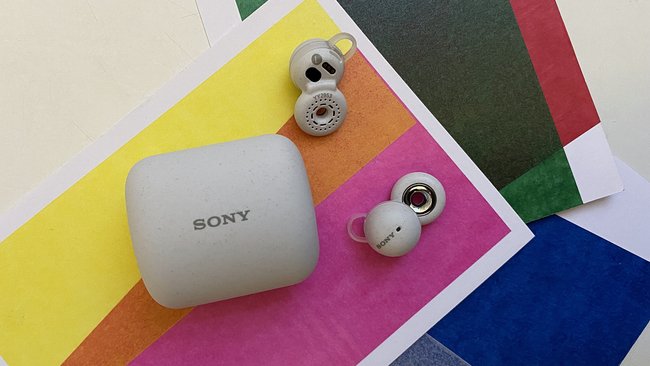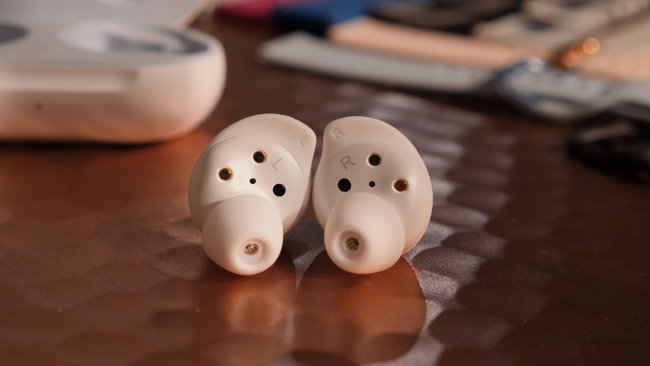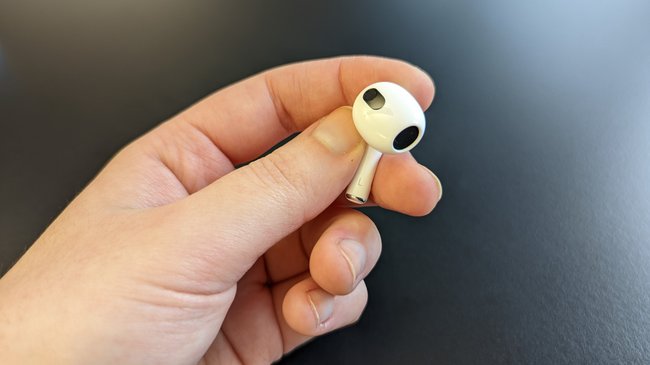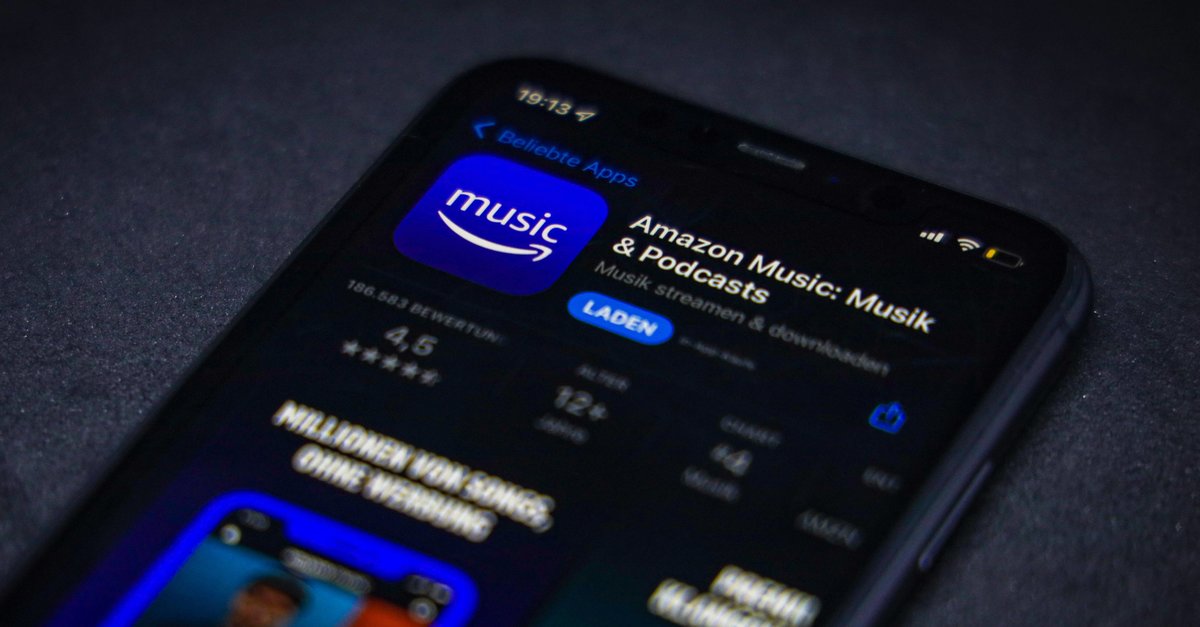The 6 best alternative in-ear headphones without rubber
If someone is looking for “headphones like the Apple AirPods”, then they often mean: A similarly shaped model – i.e. without plugs/inserts made of silicone, which can cause an uncomfortable feeling in the ear. This design is also known as “open-fit” or “classic earbuds”. Introducing the best “open” Bluetooth in-ear headphones that are easy-to-wear.
Contents
Bluetooth headphones without silicone attachments: true wireless and neckband
Let’s take a look at in-ear headphones without rubber attachments – the choice is larger than you might think at first.
Nothing Ear Stick
The partially transparent design of the earphones and case is impressive. The model Nothing Ear Stick (view at Amazon) comes from the manufacturer of the equally transparent Phone 1 (see GIGA test). The headphones are quite airy in the ear, the speech intelligibility when making calls is high – an ideal candidate for the home office.
We unpacked and tried out the Nothing Ear Sticks:
JBL Tune 225TWS
In the Audio Test magazine (issue 07/2020, available from Readly), they earned their place JBL Tune 225TWS (view at MediaMarkt) the test grade “good”. The comfortable seat and the low price received special praise.
On Amazon, the earbuds come off quite well with an average customer rating of 4.2 out of 5 stars. In terms of sound, nothing for deep bass fans, but everyone else should be happy – provided the housing sits correctly in the ear cups. JBL currently has six color variants in its range – Apple should learn a lesson from that.
Samsung Galaxy Buds Live
Samsung relies on a special shape: The Galaxy Buds Live (view at MediaMarkt) are reminiscent of beans. The profile is correspondingly flat after insertion – there is hardly anything sticking out of the ears. Overall, a successful approach, since the Galaxy Buds Live can also convince in terms of sound with rich bass and pleasant highs. The problem, however, is that not everyone can be considered a user. If the earlobe is too small or the auricle is unusually shaped, then it will not work with the perfect fit.
The noise canceling (ANC) can only partially hide the lowest frequencies, a real noise reduction is not achieved – it is more of a subtle effect that works there. Small pieces of silicone are attached to the housings, but they do not penetrate the ear canal, but lie against the auricle and ensure a secure fit. More information in the detailed test report on GIGA.
Sony link buds
You could have figured that out earlier, right? The Japanese manufacturer implements an unusual design concept that has a number of advantages. The compact and lightweight body of the Sony link buds (view at Amazon) are quite flat and each provided with a hole, which is located in the center of the ring-shaped drivers. Like the Samsung Galaxy Buds (see above), the in-ears are clamped into the auricle – the ear canal, which leads to the eardrum, remains accessible to air.
In this way, users always hear (important) everyday noises, for example in traffic. Conversations with other people can also be held naturally – without removing them or activating a transparency mode, as with many noise-cancelling headphones. But it is also clear that the Sony Linkbuds are more suitable for at home (home office), the university library or a walk in the park. On air travel or on the train, they do not shield the ambient noise and the enjoyment of music is restricted. The sound is surprisingly good: the Sony Linkbuds reproduce music and voices crystal clear, and live performances in particular are enjoyable (e.g. Nirvana – MTV Unplugged on Amazon Music Unlimited). The slightly slimmer bass is typical of the open design. If you like particularly powerful bass drums, you have to make compromises here.
Multipoint Bluetooth should be able to be installed via update:
JBL Tune 215BT
Of the JBL Tune215BT (view at Amazon) doesn’t rip a hole in your wallet and that’s a good thing. The in-ear headphones with neckband offer the essentials, i.e. a sufficiently good sound quality and a high battery life of up to 16 hours per charge.
Shokz OpenRun Pro
Ever heard of bone conduction transducers? With that he transmits AfterShokz OpenRun Pro (view at Amazon) the sound into the ear – via the cheekbones, without “clogging” the ear canal. Sarah will show you what this looks like when you use it in practice:
A rather unusual principle, but it works and even sounds quite good. Athletes in particular should take a look at the OpenRun Pro. One thing is for sure: you can hardly have your ears freer with headphones – more on that in our detailed test report.
Earphones (in-ear headphones) or earbuds: what’s the difference?
There are numerous different designations for the headphone designs described here, which are not used consistently. The reason for this is that the manufacturers have not agreed on a binding and official nomenclature – rather, the designations result from everyday use. We’ll pull that instead Definition of the US magazine Lifewire to rate at the between earphones and earbuds is distinguished.
1. Earphones (with rubber)
When earphones or simply “in-ears” is the name given to in-ear headphones, as they are widespread these days: Two fairly compact housings are inserted into the ear canal. They seal by means of a cylindrical adapter silicone or foam the ear completely – similar to a plug or a noise protection earplug (“Oropax”). The advantage of this design is a high level of passive isolation, so little ambient noise penetrates. The bass reproduction tends to be more powerful, since practically no sound energy is lost to the outside.
Disadvantages: The strong shielding from the environment is a danger when used in traffic. Earwax can sometimes be pushed deeper into the ear. In addition, the wearing comfort is uncomfortable for some people, they find earphones penetrating and sometimes even painful.
2. Earbuds (without rubber)
In contrast, are earbuds not ear-closing – they lack the adapter. It is usually about hard plastic casewhich are shaped in such a way that they fit into the auricle (more precisely: auditory canal entrance funnel, cavum conchae) can be attached. They nestle up against the shape of the ear canal, but do not seal it completely – they are, so to speak, “permeable to air”. The wearing comfort is looser and freer than with earphones, and as a wearer you also hear a lot more of the ambient noise.
One of the disadvantages is a sound that tends to sound “thinner” with less bass power, but this is often compensated for by a special bass emphasis. In some ears, however, earbuds simply do not want to hold and fall out very easily – then only a solution with ear hooks will help, some of which are also optionally available.


